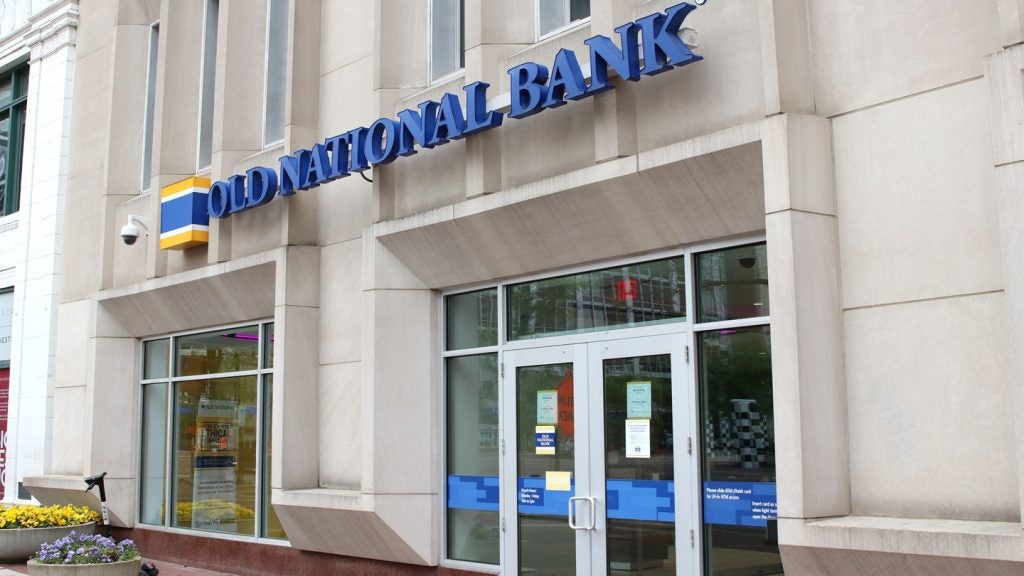Mobile banking is
growing up fast. But what have banks and their suppliers learned
from the many initiatives launched over the past few years? The
Retail Banker Interactive ‘Mobile banking: Emerging best
practice’ webinar, held in association with Finacle from Infosys,
set out to find answers.
The third webinar presented
by Retail Banker Interactive, in association with Finacle
from Infosys, provided an in-depth overview of what trends are
emerging in the current mobile banking market across the globe and
also highlighted emerging practices.
The Mobile banking:
Emerging best practice panel consisted of Christo Vrey,
managing executive for digital channels at Absa; and Chandrashekar
Rao Kuthyar, senior product line manager at Infosys. The webinar
was chaired by Retail Banker International editor Douglas
Blakey.
Blakey mentioned there was a
time when m-banking was used as a ‘nice to have’ channel –
something to experiment with.
However, now the majority of
banks in the UK are offering some form of m-banking, and there is a
realisation that m-banking can generate new revenue and cut channel
costs, said Blakey.
How well do you really know your competitors?
Access the most comprehensive Company Profiles on the market, powered by GlobalData. Save hours of research. Gain competitive edge.

Thank you!
Your download email will arrive shortly
Not ready to buy yet? Download a free sample
We are confident about the unique quality of our Company Profiles. However, we want you to make the most beneficial decision for your business, so we offer a free sample that you can download by submitting the below form
By GlobalDataM-banking adoption can also
result in less calls to the call centre and transactions at the
branch, reduce fraud losses, generate new sales leads, and offer
new services such as location based marketing.
Blakey added: “A number of
questions arise, such as, could the m-banking channel become most
popular in terms of transactional abilities and, if so, how
soon?”

Blakey cited examples of how
banks are using m-banking in innovative ways such as Bankinter
trialling biometric recognition over mobile; la Caixa offering
point of sale products; and Nordea offering loan applications over
mobile.
But globally, “there is still
a very long way to go in terms of market penetration”, said
Blakey.
The first speaker,
Chandrashekar Rao Kuthyar (CS), talked about how the perspective of
what a bank is has changed over time.
“Probably earlier generations
looked at banks as a physical building – a place that you can go
and conduct transactions,” he said.
“Today’s generation looks at
ATMs and the internet as the bank. Obviously the next generation
will look at the mobile phone as a bank.”
Mobile banking has
contrasting capabilities using different access channels, CS
continued.
“You have SMS, USSB, mobile
browser, rich downloadable plans – each one of them comes with its
own idiosyncrasies,” said CS, adding that, in the future, the user
should be able to “move across any access channel, use any phone,
and conduct transaction to any channel”.
“So what was once considered
as a separate channel may get consumed and become integrated as a
universal channel,” said CS.
“We also see that there can
be cross channel transactions.”
Due to bank accounts being
integrated with NFC capabilities, a lot of contactless payments –
especially in the transport sector – can be expected. The level of
interactivity and intelligence over m-banking is also set to
increase, said CS.
The next aspect that may make
a “drastic difference to the perception of mobile banking” is the
ability to customise and personalise over mobile banking, and “the
sky is the limit for the amount of personalisation one can do”,
said CS.
More security measures can be
expected of mobile transactions as well.
Over a period of time, the
mobile will become an integrated channel in the overall ability and
strategy of the bank, said CS.
“Probably every bank will
have an app in the app store, which will give interest rates, call
centre numbers, whatever schemes that are available,” he
said.
“The entire gamut of
information will be available to the user at the click of a button.
The bank will have eight to10 different apps. So m-banking will not
be an isolated app but it will become a platform to roll out new
apps.
“The last, most important,
aspect is the ability to service the customer in real time
depending on what the need of the customer is,” added
CS.
“With m-banking you have the
context capability to reach out and understand his needs without
him explicitly stating it.”
CS ended his presentation
saying there is still a “very long way to go and, if there is a
well planned approach, I think the return of investment will be big
for all of us”.
Vrey’s presentation
highlighted the segmented m-banking proposition that Absa follows –
WAP based m-banking, that is a rich interface providing a range of
features, and WIG based m-banking that has a different carriers
utilised for the m-banking application.
“The important thing about
these two services is that they are both fully fledged m-banking
platforms,” said Vrey.
“They are integrated into our
online banking environment and about 85% of online banking
capabilities are reflected in those platforms.”
Vrey spoke about Lite – the
m-banking service which works via USSD technology – and its utility
in the mass market context.
“That really is a scaled down
version of m-banking with value limits, functionality limits – it
makes it very easy for the mass market to get access to core
functionality that is required,” said Vrey.
Absa also offers a public
domain portal over the mobile channel with a range of value added
services catering to the youth segment.
“We are selling 55,000 music
tracks every month to the youth segment,” said Vrey.
“I am saying selling it to
them because they are buying it through the portal, which is how we
make sure as that the mobile as a financial services tool grows
both on the financial services side as well as the lifestyle
element.”
Out of Absa’s 11m clients,
over 3.2m use one of the lender’s mobile services. Absa’s separate
messaging service, Notify Me, currently has over 7m registered
clients, said Vrey.
“Higher end applications
remain as a point in time application for transacting. We see,
typically on a monthly basis, 25% to 30% activity levels raised by
those clients,” he added.
“However if you go down to
the Lite version, that really becomes the primary banking tool for
over 1.8m out of over 3m m-banking customers that we
have.
“Their activity levels on a
monthly basis exceed 70%, which says that it is a very important
need in their day to day lives.”
Absa’s m-banking is
integrated with all the channels that the bank has. Absa
experienced a 65% increase in the volume of mobile transactions
year-on-year, from 2010, and the value continues to increase, said
Vrey.
Vrey mentioned how the
behaviour in the utilisation of the m-banking platform is different
to those on the online platform.
For Absa, having the basic
set of m-banking capabilities in place is essential, said Vrey,
adding that having authorisations in place is also important. Absa
is trying to expand the payments franchise for card-less ATM
withdraws through which customers will be able to generate payments
over an SMS for another user to receive a code and use it at any
Absa ATM to withdraw money.

“That is complemented with an
international remittance model,” said Vrey.
The accelerated fold out of
value added services is important for Absa, and one of the most
popular services over m-banking is the purchase of prepaid air time
and electricity, informed Vrey.
Absa also offers a capability
where clients can purchase bank products over mobile, alongside
allowing clients to apply for a personal loan on its public domain
portal or over m-banking.
Vrey added that Absa has 200
staff members across 700 branches who are “dedicated to promoting
the utilisation of the digital channels, particularly so
m-banking”.
“We see a huge influx of
queues in our branches so it is important to make our customers
aware of how they can actually utilise the phone to get access to
our services,” he said.
“We have an educational touch
screen kiosk in many of our branches. We sent 5m educational MMSs
in the last few months.”
Absa is exploring the next
level of m-banking and m-payments and plans on piloting “some
innovative ideas in the next 18 to 12 months”, said
Vrey.
Next came the Q&A session
that raised several interesting listener queries. A key question
was around whether or not HTML 5.0 will replace operating system
specific apps.
According to CS, HTML 5.0 “is
definitely going to make the job of mobile access browser simpler”,
but it will not replace native apps as they provide “excellent
distribution media” for the consumer.
Vrey answered that banks will
have to “cater for a variety of capabilities – it could be HTML 5.0
as well as the app space”.
“We have a view that we will
be supporting a hybrid stronger than a native app approach in 2012,
which will further strengthen our current offering,” said
Vrey.
Three spot polls were run
during the webinar. Both the panellists answered the second spot
poll question – Is m-banking an extension of online banking? Or
should it be treated as a separate channel?
CS said m-banking is a
separate channel with separate characteristics, but it must be
fully integrated. Vrey agreed, adding that a “very innovative
fighting ground” has emerged.
Blakey mentioned that
Bankinter is charging fees for its m-banking service – due to which
the lender’s m-banking penetration rate reduced from 78% to 73% –
and asked: “Can this growth in m-banking be regarded as a source of
revenue for banks?”
CS answered that it can, but
not now.
“I think the design of the
m-banking solutions needs to undergo a paradigm shift in maturity –
it is still not comfortable for the user,” he said.
“When he starts loving the
product, that is the time to charge for the service.”
Vrey confirmed Bankinter’s
view that m-banking is an avenue for revenue creation.
“We are not charging for
m-banking as a single entity,” he said.
“However we leverage fee for
some of the payments, transactions, and some value added services.
So that actually gives you a significant non-interest revenue
channel from a m-banking point of view.”
Vrey spoke about gathering interest revenue through
selling bank products over the mobile channel. The savings made
over m-banking also factor in as a revenue generator.







